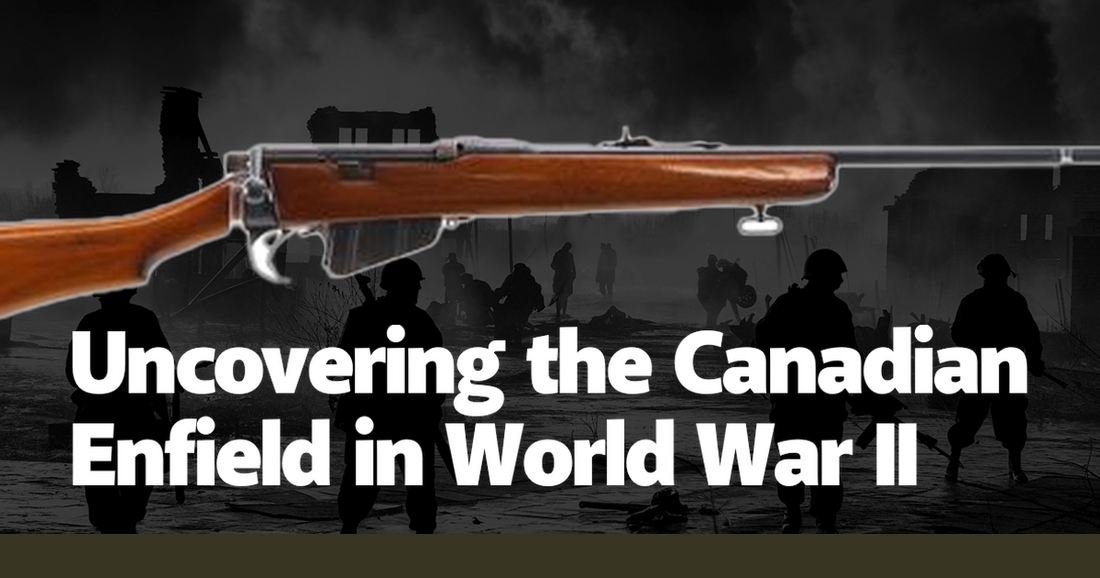The Canadian Enfield, officially known as the Rifle, No. 4 Mk I*, played a pivotal yet often overlooked role in World War II. Manufactured by the Long Branch Arsenal in Ontario, this rifle was a testament to Canadian ingenuity and resilience. The Enfield was not just a weapon; it was a symbol of Canada’s commitment to the Allied cause. The rifle’s design, a modification of the British Lee-Enfield, was tailored to meet the specific needs of Canadian soldiers. Its robustness and reliability in harsh conditions made it a favorite among troops, who affectionately referred to it as the "Long Branch Enfield." This rifle was more than a tool of war; it was a lifeline for many soldiers facing the brutal realities of combat.
The Long Branch Arsenal began production in 1941, at a time when Canada was ramping up its military contributions. The Arsenal’s workers, many of whom were women, labored tirelessly to produce the Enfield rifles at an unprecedented rate. Anecdotes from the factory floor reveal a sense of urgency and patriotism that permeated the workforce. One such story is of a young woman named Margaret, who joined the assembly line after her brother was deployed overseas. Her meticulous work on the rifle's bolt-action mechanism ensured that each Enfield leaving the factory was of the highest quality. This personal connection to the war effort was not uncommon, and it underscored the collective resolve of the Canadian people.
In the field, the Canadian Enfield proved its worth time and again. During the grueling Italian Campaign, Canadian forces relied heavily on the Enfield’s accuracy and durability. The rifle’s performance in the rugged terrain and harsh weather conditions of Italy was exemplary. Soldiers recounted how the Enfield’s smooth bolt-action allowed for rapid firing, a crucial advantage in the intense, close-quarters battles that characterized the campaign. One veteran, Sergeant James McLeod, vividly remembered an engagement near Ortona, where his unit’s effective use of the Enfield helped repel a fierce German counterattack. Such accounts highlight the rifle’s critical role in the success of Canadian operations.
The Enfield was not just effective in combat; it was also a morale booster for the troops. The rifle’s reliability gave soldiers a sense of confidence, knowing that their weapon would not fail them in critical moments. This psychological edge was invaluable in the high-stress environment of war. The Enfield’s design also allowed for easy maintenance in the field, a feature that was greatly appreciated by soldiers who often had to contend with mud, rain, and other adverse conditions. The rifle’s simplicity and ease of use made it a favorite among both seasoned veterans and new recruits.
The Canadian Enfield’s impact extended beyond the battlefield. It played a significant role in training new soldiers, many of whom were conscripts with little to no prior military experience. The rifle’s forgiving nature made it an ideal training tool. Instructors praised the Enfield for its accuracy and ease of handling, which helped new recruits gain confidence in their shooting abilities. Training camps across Canada echoed with the sounds of Enfields being fired, as young men prepared for the rigors of war. The rifle’s role in shaping these soldiers cannot be overstated, as it was often their first and most enduring connection to military life.
The legacy of the Canadian Enfield continued even after the war. Many veterans kept their rifles as mementos, a tangible link to their wartime experiences. The Enfield also found a place in post-war Canadian military history, being used in training and reserve units for years. Collectors and historians today regard the Long Branch Enfield as a significant artifact, not just for its technical specifications, but for the stories and memories it embodies. The rifle represents a period of intense national effort and sacrifice, a time when Canada stood shoulder to shoulder with its Allies in the fight for freedom.
In recent years, there has been a renewed interest in the Canadian Enfield, both among military historians and the general public. Exhibitions and documentaries have highlighted the rifle’s role in World War II, bringing to light its contributions to the Allied victory. This resurgence of interest has also led to a greater appreciation of the Long Branch Arsenal and the workers who produced these rifles. Their dedication and craftsmanship ensured that Canadian soldiers were well-equipped for the challenges they faced. The Enfield stands as a testament to their hard work and the indomitable spirit of the Canadian people.
Ultimately, the story of the Canadian Enfield is a story of resilience, innovation, and national pride. It is a reminder of the crucial role that Canada played in World War II, and of the sacrifices made by its soldiers and citizens. The Enfield was more than just a rifle; it was a symbol of hope and determination in a time of great uncertainty. As we uncover the history of the Canadian Enfield, we also uncover the stories of those who wielded it, and the legacy they left behind. This rifle, forged in the fires of war, remains a powerful emblem of Canada’s enduring commitment to peace and freedom.

